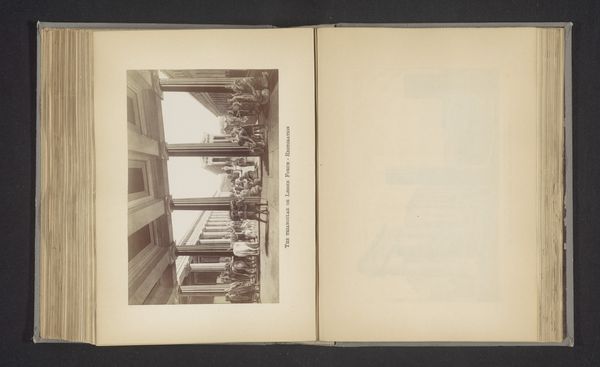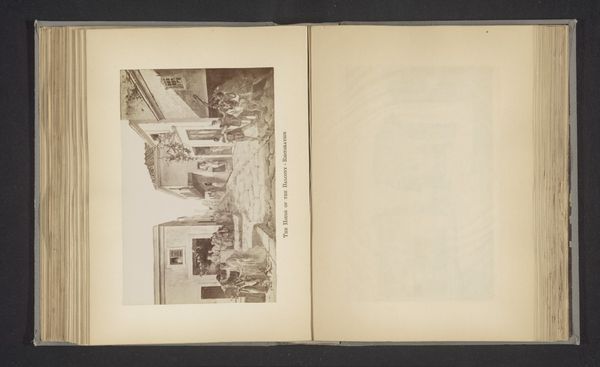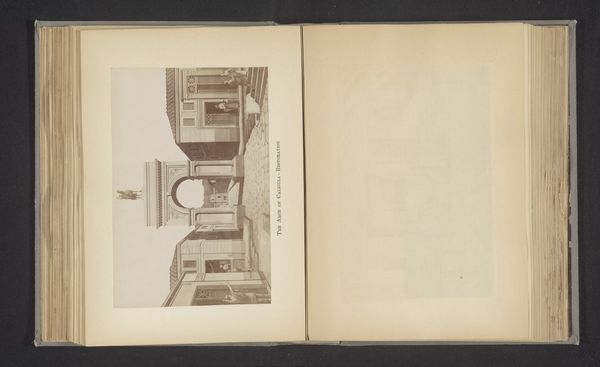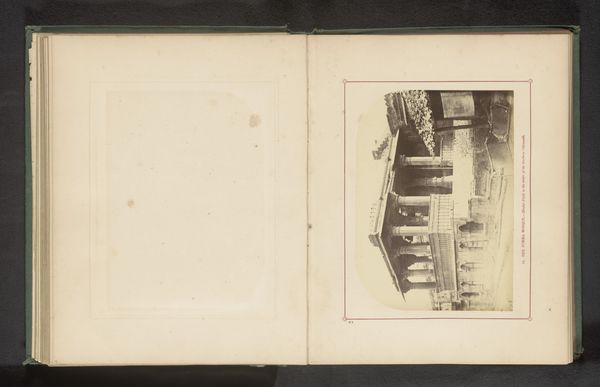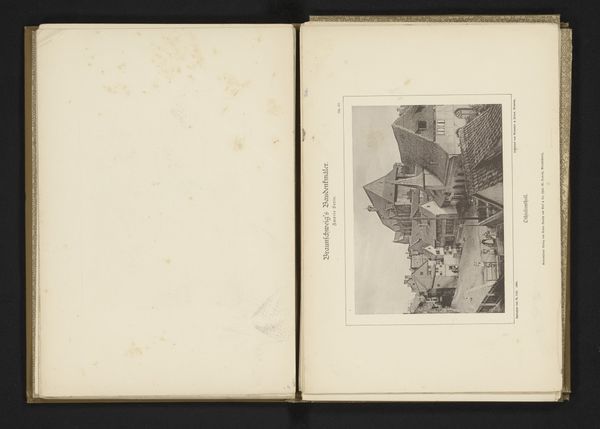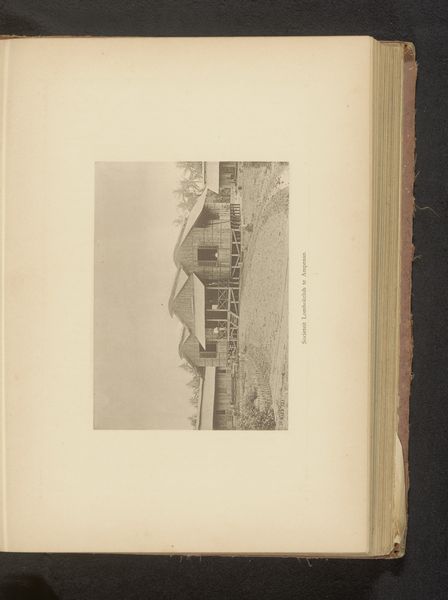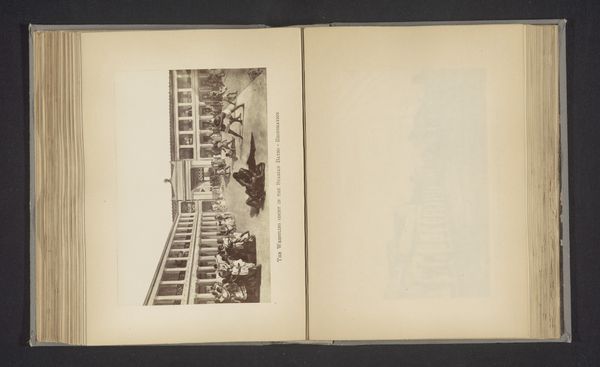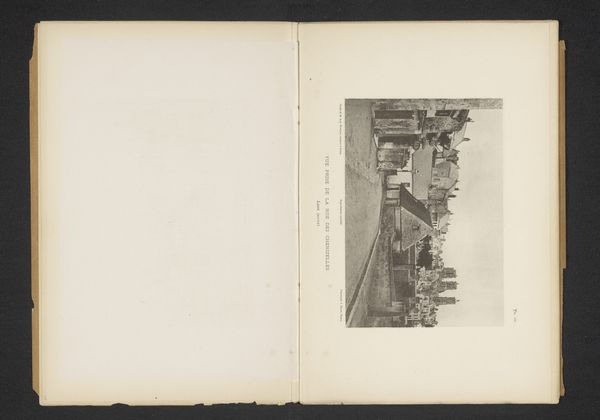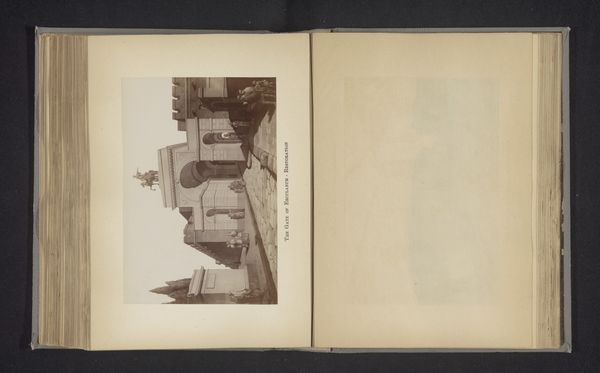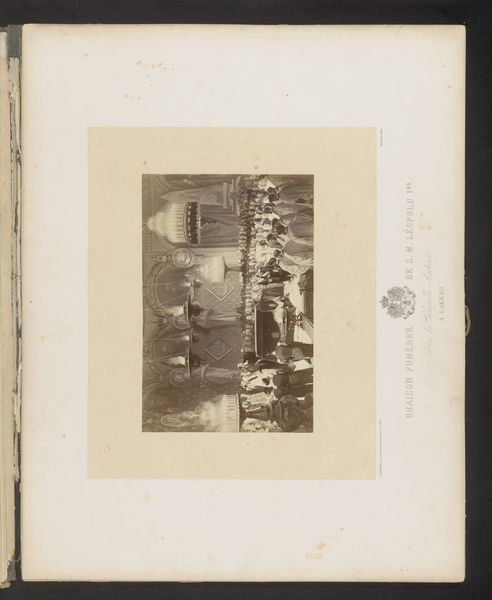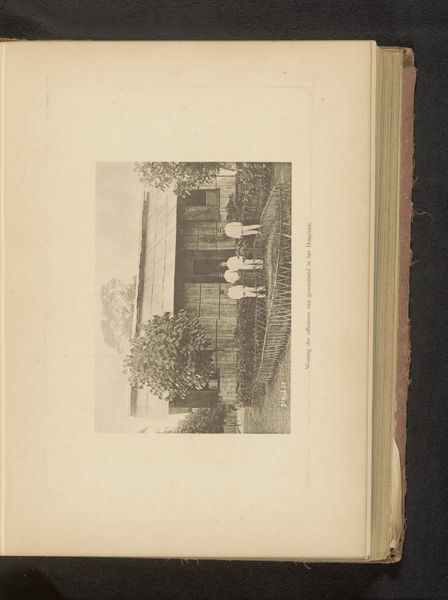
print, photography, architecture
# print
#
greek-and-roman-art
#
landscape
#
photography
#
ancient-mediterranean
#
column
#
architecture
Dimensions: height 117 mm, width 184 mm
Copyright: Rijks Museum: Open Domain
Curator: Oh, this is quite remarkable, isn't it? We're looking at an early photographic print, predating 1895. It’s called “Fotoreproductie van een gezicht op de tempel van Venus," showing the Temple of Venus in, well, somewhere I don't immediately know... the scan is showing it in the pages of an open book, maybe we could infer from there? Editor: My first thought is how very…sepia it is. It immediately brings to mind old family albums and long-lost vacations. It almost feels dreamlike, removed from our time. So, Venus and dreamlike qualities: romance and desire... It's interesting. Curator: It’s striking how solid those forms feel, how crisply rendered—architecture through a romanticizing lense. Editor: Precisely. The print is imbued with such stillness, yet it depicts a site laden with histories and conquests. How do we reconcile those clashing narratives, the placid image with its very violent, active past? Curator: The architecture is inherently coded. The columns, that almost brutally perfect symmetry... it’s intended to inspire awe, an embodiment of Roman power made, in some ways, disturbingly real through photography. But it also offers something deeply vulnerable, if you can perceive its long slow state of decay, as its surfaces begin their retreat towards oblivion. Editor: Decay also echoes lost love or perhaps how Venus's temples weren't just dedicated to love as romance but to pleasure, to a powerful and political force. Thinking of Venus as a deity of power subverts the expectation to find only gentle romantic ideas here. It's almost rebellious. What do you feel is missing in this image, for you? Curator: Movement! There are no figures, no sense of the city teeming around it. This feels…preserved. A moment out of time, yes, like memory does—and, to some extent, art should do, too. It is not real space and time in the image but something deeply emotional and intensely fragile. It whispers of mortality. I wonder, too, about the photographer, peering through that lens a lifetime ago… Editor: Agreed, a trace of absence that amplifies the politics, time, and memory intertwined within it. What remains is the story, inviting us to unpack how the aesthetic choices—photography and preservation—create very pointed meanings about cultural value and power. That tension gives it a unique potency. Curator: A little death mask, perhaps? Lovely thought. I see its light differently now! Editor: Absolutely, as it unveils another facet. Let’s pause on that—an early photographic moment, caught mid-reflection!
Comments
No comments
Be the first to comment and join the conversation on the ultimate creative platform.
